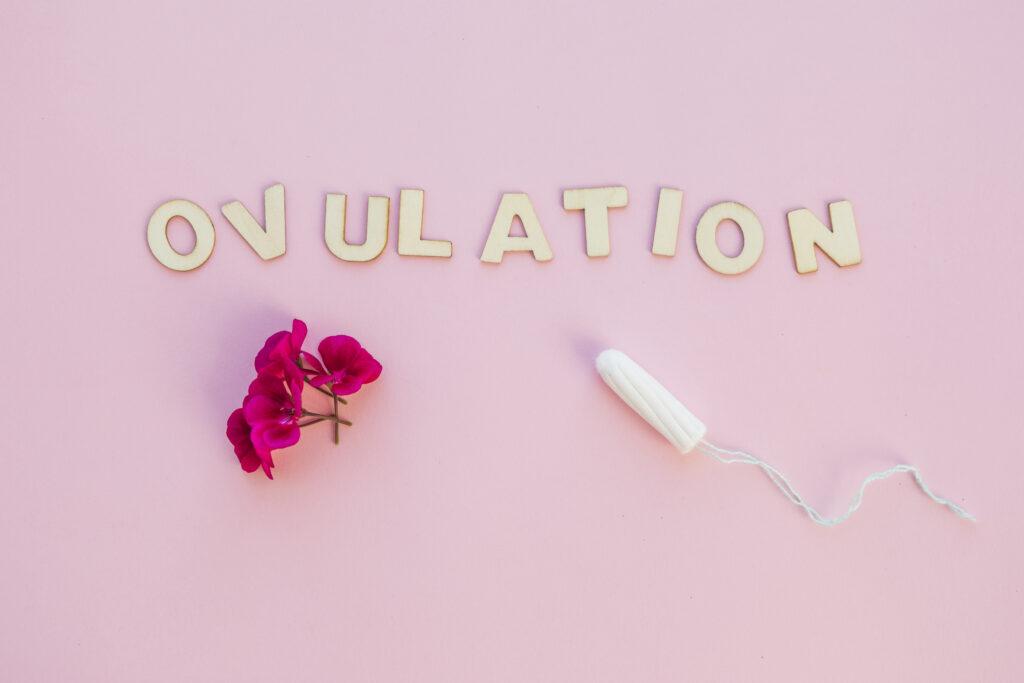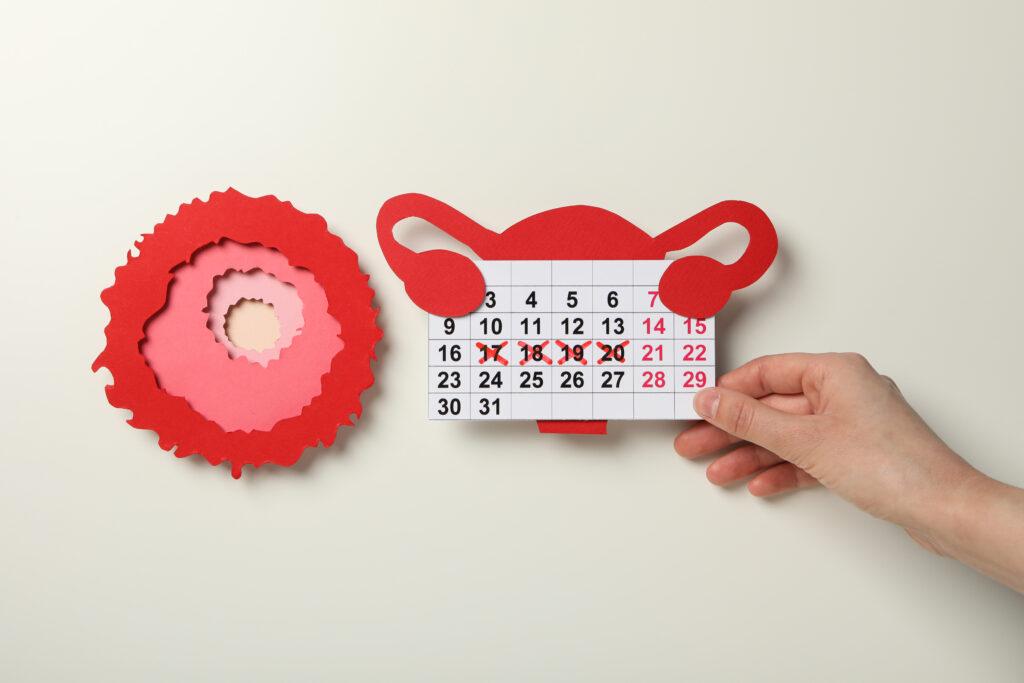When Is Ovulation Time? How to Calculate Your Fertile Window for Pregnancy
Introduction
If you’re trying to conceive, one question matters more than almost any other: when is ovulation time? For couples in Mylapore and K. K. Nagar, understanding this single piece of the fertility puzzle often transforms uncertainty into a clear, confident plan. Ovulation is the brief window in each menstrual cycle when a mature egg is released and can be fertilized. Getting the timing right helps you align intercourse with your most fertile days, avoid guesswork, and make better decisions about when to seek support.
At Kanaa Fertility Centre in Chennai, our approach blends science with empathy. We help you understand your cycle, interpret body signals, and use the right tools—so you aren’t relying on myths or random calendars. In this guide, we’ll explain how to calculate ovulation period, pinpoint the best time to conceive after period, recognize signs of ovulation in women, and use an ovulation calculator for pregnancy in a smart, evidence-aligned way. You’ll also learn how the experts at Kanaa personalize strategies based on age, hormone levels, and cycle history.

What It Is & How It Works
If you’re trying to conceive, one question matters more than almost any other: when is ovulation time? For couples in Mylapore and K. K. Nagar, understanding this single piece of the fertility puzzle often transforms uncertainty into a clear, confident plan. Ovulation is the brief window in each menstrual cycle when a mature egg is released and can be fertilized. Getting the timing right helps you align intercourse with your most fertile days, avoid guesswork, and make better decisions about when to seek support.
At Kanaa Fertility Centre in Chennai, our approach blends science with empathy. We help you understand your cycle, interpret body signals, and use the right tools—so you aren’t relying on myths or random calendars. In this guide, we’ll explain how to calculate ovulation period, pinpoint the best time to conceive after period, recognize signs of ovulation in women, and use an ovulation calculator for pregnancy in a smart, evidence-aligned way. You’ll also learn how the experts at Kanaa personalize strategies based on age, hormone levels, and cycle history.
How to Calculate Ovulation Period
Different methods suit different bodies and lifestyles. Here’s how to triangulate the answer to when is ovulation time using multiple cues.
1) Calendar Method (Estimate)
Track several cycles to determine your average cycle length. Subtract 14 days from your expected next period to estimate ovulation. For example, in a 30-day cycle, ovulation often occurs around Day 16 (30 – 14). This is a starting estimate, not a guarantee—best combined with the methods below.
2) Cervical Mucus Observation
As ovulation approaches, estrogen rises and cervical mucus becomes clear, stretchy, and slippery—often compared to raw egg white. This “fertile-quality” mucus helps sperm swim and survive, signaling your best time to conceive after period. When mucus turns wet, slick, and stretchy between your fingers, your fertile window is open.
3) Basal Body Temperature (BBT) Charting
Your basal body temperature rises slightly (about 0.3–0.5°C) after ovulation due to progesterone. Because the temperature rise occurs after the egg is released, BBT confirms ovulation retrospectively. Use BBT to verify patterns across cycles and combine it with mucus or OPKs to time intercourse beforehand.
4) Ovulation Predictor Kits (OPKs)
OPKs detect the LH surge in urine, generally indicating ovulation will occur in the next 24–36 hours. They’re easy to use at home. For the most accuracy, test at the same time daily and start a few days before your estimated fertile window. If your cycles are irregular, begin earlier and track continuously for a few cycles.
5) Ultrasound Follicle Tracking & Hormone Tests
At Kanaa Fertility Centre, we can monitor follicle growth with transvaginal ultrasound and check hormones like LH, FSH, estradiol, and progesterone. This is the most precise way to determine when is ovulation time, especially if cycles are irregular or if previous methods are confusing.
Pro Tip: Combine methods. For example, use OPKs plus mucus tracking. When your OPK turns positive and your mucus is egg-white, it’s time to try.
Signs of Ovulation in Women
Tracking signs of ovulation in women helps you respond to your body in real time:
- Cervical mucus changes: Clear, stretchy, slippery (egg-white consistency).
- Ovulation pain (mittelschmerz): A mild cramp, twinge, or ache on one side of the lower abdomen.
- Slight BBT rise: Post-ovulation temperature baseline is a bit higher.
- Tender breasts or bloating: Related to hormonal shifts.
- Increased libido and energy: A common, natural cue of fertility.
- Cervical position changes (advanced users): The cervix may feel higher, softer, and more open around ovulation.
Everyone’s signals differ. If you don’t notice obvious changes, OPKs, ultrasound, or professional guidance can fill the gap.
How Ovulation Works in Fertility
Ovulation is essential for conception. Without a released egg, fertilization can’t occur. That’s why anovulation (no ovulation) or irregular ovulation can delay pregnancy—even if everything else is normal. If sperm meets the egg during the fertile window, fertilization can take place, and the embryo may implant about 6–10 days later. If not, your cycle continues to menstruation.
If you’ve been trying for a while without success, understanding when is ovulation time is the first step. The next step is ruling out other factors—sperm health, tubal patency, uterine conditions—so you can act efficiently rather than waiting and worrying.
Future Need & Market Potential in Mylapore, K. K. Nagar
In Chennai’s dynamic neighborhoods—Mylapore and K. K. Nagar—awareness of fertility health is rising. Couples increasingly expect data-led, personalized answers to how to calculate ovulation period, not generic advice. Here’s how care is evolving and how Kanaa is preparing:
Deeper Hormonal & Follicular Diagnostics
We anticipate broader access to precise LH/FSH/AMH assays and high-resolution ultrasound tracking. This means more accurate timing and fewer “missed” cycles—especially for patients with PCOS or irregular periods.
Personalized Treatment Algorithms
“One size does not fit all.” Kanaa’s care adapts to your profile: age, ovarian reserve, cycle length, hormone patterns, lifestyle, and goals. Some patients benefit from natural-cycle timing, others from minimal stimulation or ovulation induction—always chosen with you, not for you.
Lifestyle & Wellness Integration
Sleep, nutrition, stress, and activity levels affect ovulation quality. Expect integrated programs that combine dietary support, physiotherapy, stress-management, and yoga with medical oversight—so biology and lifestyle work together.
Technology-Enabled Monitoring
Teleconsultations, cycle-tracking apps, and home testing kits can shorten the time between noticing a sign and getting tailored advice. Expect more virtual care that complements in-clinic scans and tests.
Outcome Tracking & Continuous Improvement
Transparent tracking of induction success rates (ovulation achieved, clinical pregnancy by age group, time-to-pregnancy) will help patients compare options and create evidence-based plans.

Why Choose Us for “When Is Ovulation Time” in Mylapore, K. K. Nagar
Kanaa Fertility Centre brings together medical expertise, clarity, and careful listening. Here’s what that means for you:
Scientific Foundations, Human Conversation
We explain the process of ovulation in simple language: the follicular phase, LH surge, egg release, and luteal phase. You’ll always know why we recommend a test or timing strategy.
Recognizing Your Signals
We teach you to spot signs of ovulation in women—from cervical mucus and OPK patterns to subtle body cues—so you feel informed, not overwhelmed.
Smart Use of Tools
We help you use an ovulation calculator for pregnancy effectively by combining calendar estimates with OPK results and mucus observations, then verifying with ultrasound when needed.
Tailored Plans
From timed intercourse to ovulation induction (if indicated), we tailor the plan to your body and goals. If cycles are irregular, we identify the cause and correct course—gently but purposefully.
Ethical, Transparent Guidance
We keep expectations realistic and discuss alternatives, timelines, and next steps openly. No pressure, no overpromising—just evidence-based care.
Need for Service & Past Track Record
Why This Service Matters
Ovulatory disorders are a leading, treatable cause of delayed conception. Without ovulation or with poorly timed intercourse, the odds stay low regardless of enthusiasm or frequency. Access to reliable cycle tracking, how to calculate ovulation period accurately, and prompt care can save months of uncertainty.
Kanaa’s Past Track Record
- 15+ years of collective expertise in reproductive medicine.
- 25,000+ families helped through comprehensive fertility care.
- Services include Ovulation Induction with Follicular Monitoring for patients with anovulation or poor ovulatory function.
- Strong patient satisfaction at the K. K. Nagar branch (around 4.8/5 across hundreds of independent reviews), reflecting trust in our communication style and care quality.
Note: Patient reviews express satisfaction but aren’t a substitute for individualized medical outcomes. Your plan will be tailored after a clinical evaluation.
Expert Advice: Practical Tips and Cautions
1) Understanding Ovulation
Ovulation is the release of a mature egg, usually ~14 days before the next period. This is your peak fertility time. If fertilization doesn’t occur, hormone levels drop and a period follows.
2) How to Identify Ovulation
- Cervical mucus: Clear, stretchy, slippery = likely fertile.
- OPKs: Positive LH tests indicate ovulation in ~24–36 hours.
- BBT: Confirms ovulation after it happens (useful for pattern tracking).
- Mild one-sided cramps: Possible ovulation pain (mittelschmerz).
- Libido & mood: Often higher near ovulation.
- Apps & calculators: Use them as guides, not absolutes; verify with physical signs or OPKs.
3) Lifestyle & Health Tips
- Maintain a healthy BMI; under- or overweight can disrupt cycles.
- Eat a balanced diet: colorful vegetables, quality protein, whole grains, omega-3s, iron, and folate.
- Exercise moderately and manage stress (yoga, walking, breathwork).
- Sleep 7–9 hours; sleep debt can affect hormones.
- Avoid smoking and minimize alcohol/caffeine—both may affect ovulation quality.
4) When to See a Specialist
- Cycles are irregular, very short (<21 days) or long (>35 days).
- No positive OPKs for several cycles, or no observable mucus changes.
- History of PCOS, thyroid issues, endometriosis, pelvic infections, or surgeries.
- You’re under 35 and trying for 12 months (or over 35 and trying for 6 months) without success.
5) Key Expert Takeaway
Your body gives signals; science provides tools. When you combine both—and add personalized medical guidance—you dramatically improve your chances of natural conception or, when needed, transition smoothly to fertility treatments.
Using an Ovulation Calculator for Pregnancy (Smartly)
An ovulation calculator for pregnancy can estimate your fertile window based on recent cycles. To get the best from it:
- Track at least 3–6 cycles for a reliable average.
- Input your shortest and longest cycle lengths if the tool allows; this gives a range, not a single day.
- Use OPKs around your predicted window to confirm the LH surge.
- Let cervical mucus guide same-day decisions; if it’s egg-white, your window is open.
If calculators and OPKs disagree repeatedly—or cycles vary widely—book a scan-based plan at Kanaa.
Conclusion
Understanding when is ovulation time is your fastest route to smarter, calmer conception planning. By combining calendar estimates, how to calculate ovulation period precisely with OPKs and mucus tracking, and leveraging professional support when needed, you can align intercourse with your most fertile days. If natural timing isn’t enough, Kanaa’s specialists are ready with ultrasound monitoring, hormone testing, and ovulation induction—all customized to your needs.
Ready to pinpoint your fertile window?
Book a consultation at Kanaa Fertility Centre (Mylapore or K. K. Nagar) for a clear, personalized plan—online or in person. Your next cycle can be your most informed one yet.
Frequently Asked Questions (FAQ)
1) What is “when is ovulation time” and how does it work?
It’s the question of pinpointing the day your ovary releases an egg. Ovulation occurs ~14 days before your next period; calculators, OPKs, mucus tracking, and ultrasound help predict it.
2) Who should consider “when is ovulation time” in Mylapore, K. K. Nagar?
Anyone trying to conceive, especially couples who want to time intercourse effectively, or those with irregular cycles who need clarity and support.
3) How do you use/apply “when is ovulation time” correctly?
Use a calculator as a baseline, confirm with OPKs and mucus changes, and aim intercourse in the two to three days before ovulation and on ovulation day.
4) What side effects, risks, or precautions apply?
Tracking has no medical side effects, but misinterpretation can lead to missed windows. If cycles are irregular, get medical guidance to avoid frustration and delays.
5) What alternatives exist and when are they better?
If natural tracking is challenging, consider ultrasound monitoring and hormonal profiling at Kanaa. If ovulation is absent, ovulation induction may be recommended.
6) Why choose Kanaa for “when is ovulation time” in Mylapore, K. K. Nagar?
Kanaa combines precision diagnostics, personalized planning, and ethical communication—so you understand your options and move forward with confidence.
Medical Disclaimer
This content is educational and not a substitute for personalized medical advice. If you have irregular cycles, pain, or concerns about ovulation, consult a qualified clinician. For tailored guidance in Mylapore or K. K. Nagar, contact Kanaa Fertility Centre.

